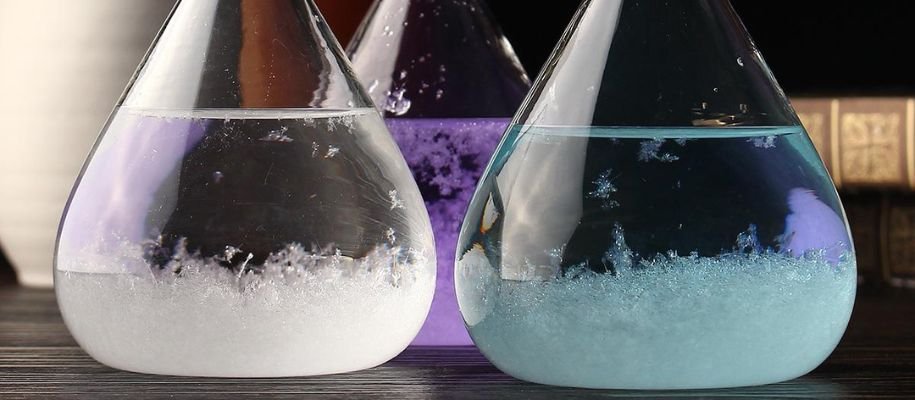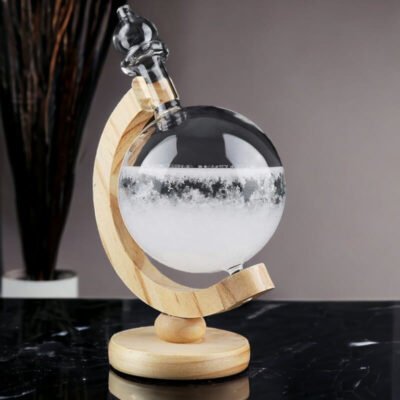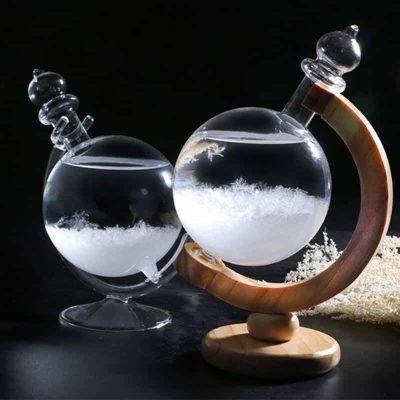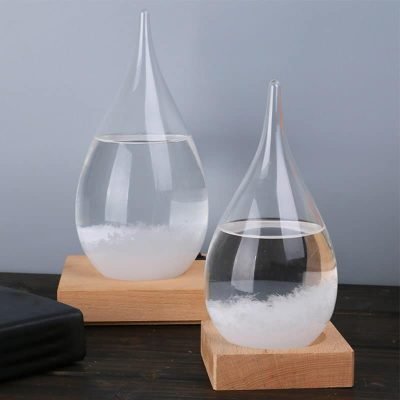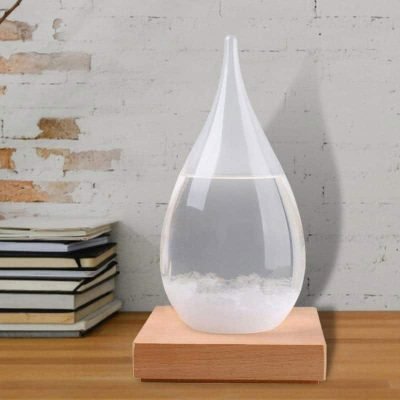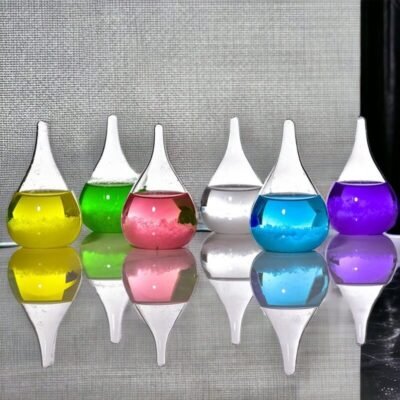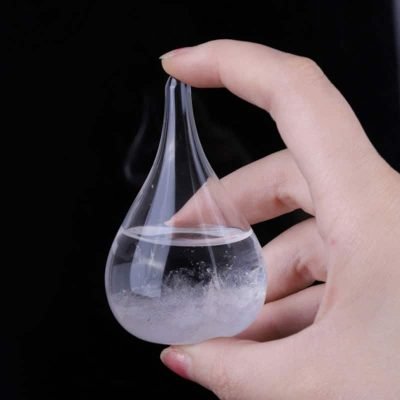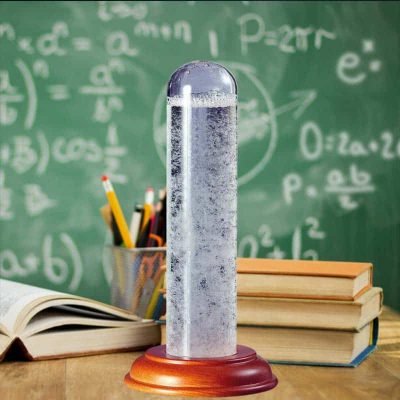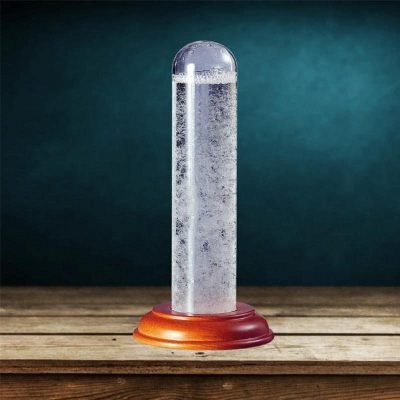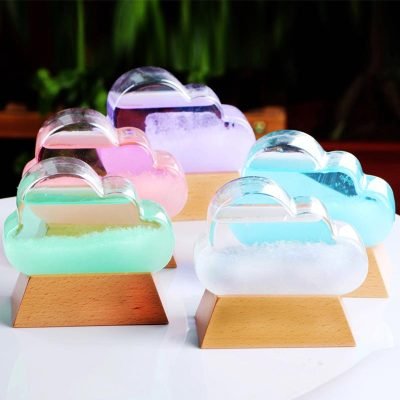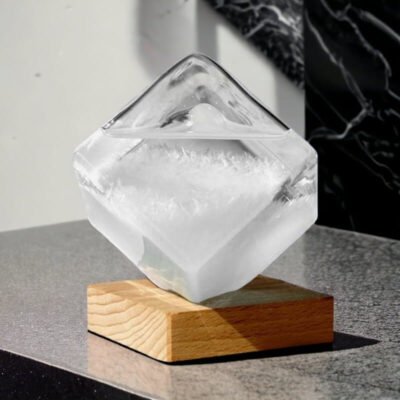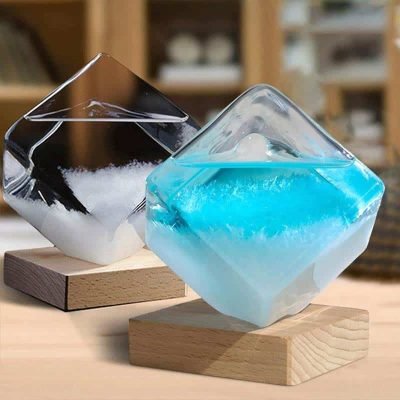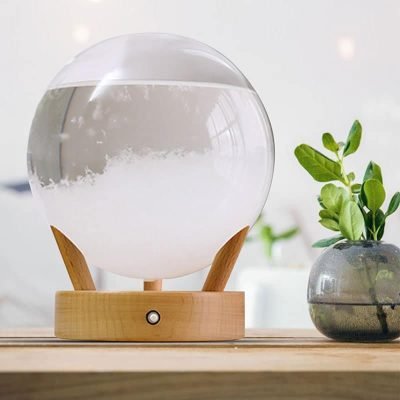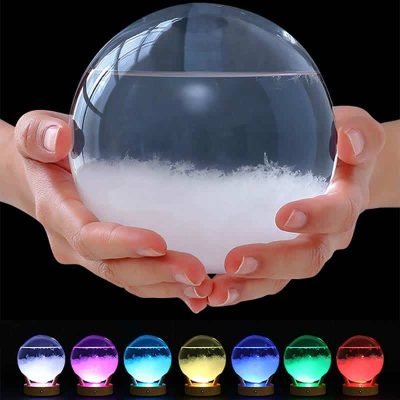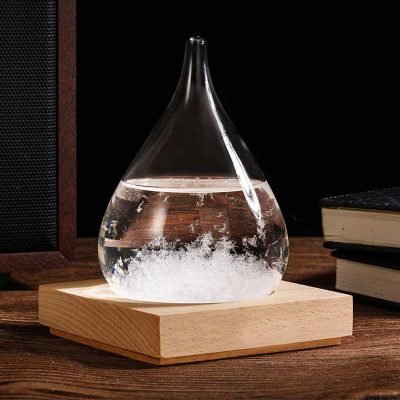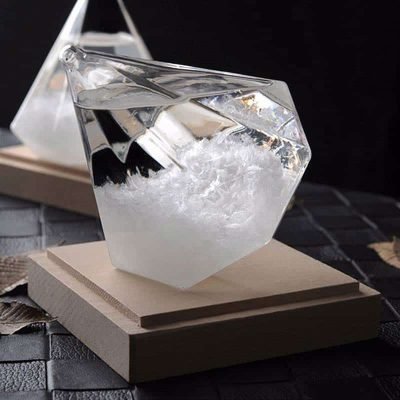Weather enthusiasts or science buffs may have heard of the crystal barometer, also known as storm glass or weather prediction glass. In this article, we take a closer look at this meteorological device, its history and how it works.
Origins of the Fitzroy barometer
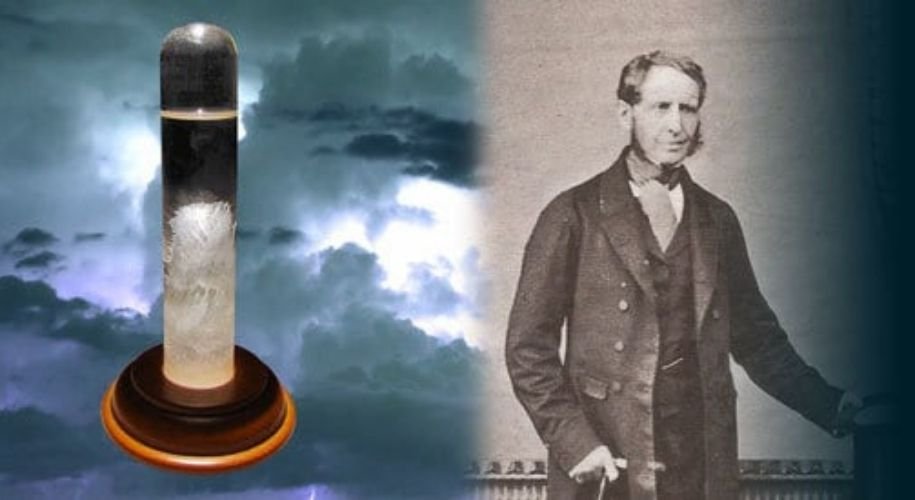
For some reason, the true inventor of storm glass is unknown. What we do know, however, is that a British naval officer by the name of Admiral Robert FitzRoy is the man responsible for its fame.
Admiral FitzRoy was a keen weatherman and, during his time aboard HMS Beagle, he experimented extensively with storm glass and carefully documented all his findings.
An enthusiastic supporter of the capabilities of storm glass, Admiral FitzRoy promoted its use throughout the UK to help meteorologists make better weather forecasts, particularly after a storm in 1859 caused hundreds of deaths at sea.
As the most accurate barometers of the time were too expensive for mass production, the British Crown ordered the delivery of large numbers of storm glasses to coastal towns and maritime communities in the British Isles.
At the time, storm glasses became commonly known as “FitzRoy barometers“.
In the late 1800s, mercury barometers became very affordable. As a result, storm glasses began to lose popularity.
They also proved to be much less accurate than originally thought, which largely contributed to their demise in the meteorological community.
What is the crystal barometer?
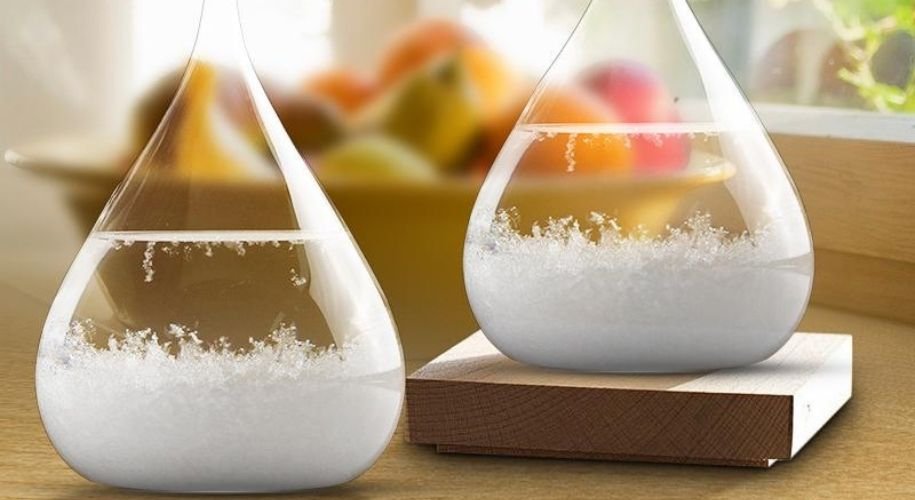
The Fiztroy barometer, also known as a storm glass or storm glass, is a tool for measuring atmospheric pressure and predicting future weather conditions.
It consists of a glass tube containing a mixture of chemicals in purified water that crystallize in such a way as to enable the weather to be forecast several days in advance, generally one to three days.
The most common ingredients inside these devices include ethanol, distilled water, ammonium chloride, potassium nitrate and camphor, although different storm glasses may have different combinations of these ingredients.
The concept is that the mixture is so finely balanced that slight variations in ambient conditions can alter the solubility of the chemicals and create a wide range of crystalline forms, from tiny floating particles to masses of flakes. Each is supposed to predict a certain type of weather.
As seen above, they may have different names, but they all have one and the same application. They come in a wide variety of shapes and sizes with different colored liquids, as nowadays they are mainly used for ornamental purposes.
Fitzroy barometer instructions for use: how does it work?
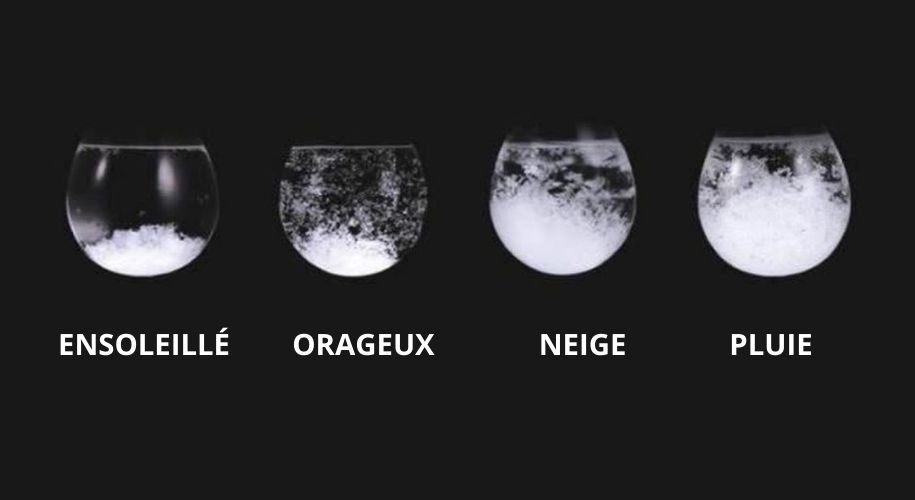
The crystal barometer is very simple to use. Simply place it in a place where there is little wind and watch whether crystals form in the tube. Depending on the appearance of the liquid, this gives an indication of atmospheric pressure, and therefore of the weather to come.
Here’s how to read a crystal barometer:
- Clear liquid: Sunny, pleasant conditions
- Small flakes in a clear liquid on clear winter days: snowy conditions expected
- Large flakes spread throughout the liquid: Cloudy, damp conditions in temperate climates – Snowy conditions in winter
- Threads near the top of the liquid: Windy conditions expected
- Cloudy liquid: Cloudy weather with the possibility of rain
- Cloudy liquid with small flakes: Thunderstorms and precipitation expected
- Small dots appear in the liquid: Wet or foggy weather expected
- Crystals appear at the bottom of the liquid: Freezing conditions expected
How accurate is storm glass?
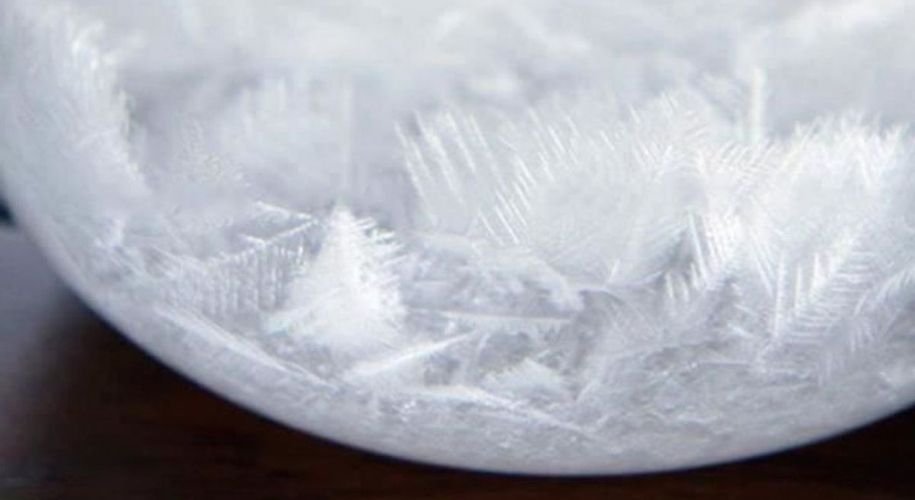
In our opinion, storm glasses should not be considered as a legitimate meteorological instrument, but rather as a scientific decorative object and a conversation piece for your desk or coffee table.
If you’re looking for accurate weather forecasts for your area, invest in a home weather station instead. Most home weather stations use barometric pressure to forecast weather conditions, over time barometric pressure has proven to be a much more accurate forecasting method.
If you’re looking for a functional and decorative weather instrument that’s reasonably accurate, we recommend a Galileo thermometer.
Our opinion on the Storm Glass weather prediction
When looking to buy a Storm Glass, remember that it’s more of a coffee table ornament than a real weather forecasting tool. However, if you keep this in mind and are a weather enthusiast (or know someone who is), a Storm Glass will make a great conversation piece or a great science gift for a loved one.
Other articles you might be interested in:
